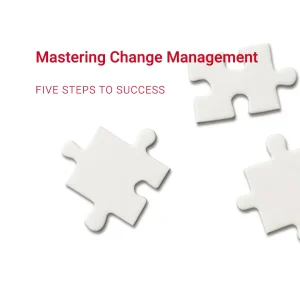The Connection Between Project Cost Tracking and Stakeholder Communication
Introduction
A project cost tracking system serves as a vital tool that enables project managers to monitor and control project expenses effectively. This system encompasses various methodologies and software solutions designed to track financial performance against the project budget, ensuring that resources are allocated efficiently and that the project remains financially viable. By providing real-time insights into spending, a project cost tracking system not only aids in maintaining budgetary discipline but also plays a crucial role in fostering transparency and accountability among stakeholders.
Stakeholder communication is another cornerstone of successful project management. It involves the systematic exchange of information between project managers and stakeholders, which can include clients, team members, and other interested parties. Effective communication ensures that stakeholders are kept informed about project progress, challenges, and financial status, thereby aligning their expectations with project realities. A well-structured communication plan tailored to the needs of different stakeholders is essential for maintaining engagement and support throughout the project lifecycle.
The interplay between project cost tracking and stakeholder communication is significant. Effective cost tracking enhances stakeholder engagement and decision-making by providing stakeholders with timely and accurate financial information. When stakeholders are informed about the project’s financial health, they can make better-informed decisions, contribute to problem-solving, and support the project more actively. This connection underscores the importance of integrating cost tracking systems with robust communication strategies, ultimately leading to improved project outcomes and stakeholder satisfaction.
Understanding Project Cost Tracking Systems
A project cost tracking system is a vital tool that enables project managers to monitor, record, and analyze the financial aspects of a project throughout its lifecycle. This systematic approach is essential for ensuring that projects remain within budget and meet their financial objectives.
Explanation of Project Cost Tracking
Project cost tracking involves the meticulous monitoring and documentation of all expenses associated with a project. This process not only helps in controlling costs but also provides insights into resource allocation and utilization, which are crucial for informed decision-making. The primary purpose of cost tracking is to maintain financial oversight, allowing project managers to identify variances between planned and actual expenditures, thereby facilitating timely adjustments to keep the project on track [5][2].
Key Components of a Cost Tracking System
A robust project cost tracking system typically encompasses several key components:
- Budgeting: This involves developing accurate cost estimates and establishing a realistic project budget before the project commences. A well-defined budget serves as a baseline against which actual costs can be compared [8][3].
- Forecasting: This component entails predicting future project costs based on current spending trends and project progress. Effective forecasting helps project managers anticipate potential budget overruns and make necessary adjustments in advance [1][6].
- Reporting: Regular reporting is crucial for maintaining transparency with stakeholders. It involves generating detailed reports that outline current expenditures, budget status, and any variances. These reports are essential for stakeholder communication, as they provide a clear picture of the project’s financial health [12][4].
Types of Project Cost Tracking Systems
Project cost tracking systems can be broadly categorized into two types: manual and software solutions.
- Manual Systems: These involve traditional methods such as spreadsheets or paper-based tracking. While they can be effective for smaller projects, manual systems often lack the efficiency and accuracy needed for larger, more complex projects. They require significant time and effort to maintain and can lead to errors in data entry and analysis [7].
- Software Solutions: Modern project management software offers comprehensive cost tracking capabilities, allowing for real-time monitoring and reporting. Tools like Hubstaff and other project management applications streamline the cost tracking process by automating data collection and analysis, thus enhancing accuracy and efficiency. These systems often include features for budgeting, forecasting, and generating reports, making them invaluable for project managers [4][15].
The Role of Stakeholders in Project Management
Stakeholders play a pivotal role in determining the success or failure of a project. Understanding who stakeholders are, their types, and how their engagement influences project outcomes is essential for project managers and communication professionals.
Definition of Stakeholders in Project Management
Stakeholders are individuals or groups that have an interest in the outcome of a project. They can affect or be affected by the project’s objectives, processes, and results. This broad definition encompasses anyone from team members and project sponsors to clients and regulatory bodies. Their involvement can significantly shape project direction and success.
Types of Stakeholders: Internal vs. External
Stakeholders can be categorized into two main types:
- Internal Stakeholders: These include individuals or groups within the organization, such as project team members, managers, and executives. They are directly involved in the project and have a vested interest in its success. Their insights and feedback are crucial for aligning project goals with organizational objectives.
- External Stakeholders: This group consists of individuals or entities outside the organization, such as clients, suppliers, investors, and regulatory agencies. They may not be involved in the day-to-day operations of the project but can influence its success through their expectations, requirements, and feedback. Engaging with external stakeholders is vital for understanding market needs and compliance issues.
The Influence of Stakeholder Engagement on Project Outcomes
Effective stakeholder engagement is critical for achieving positive project outcomes. Here are some key ways in which it influences projects:
- Enhanced Communication: Regular and transparent communication with stakeholders fosters trust and collaboration. When stakeholders are kept informed about project progress, challenges, and changes, they are more likely to support the project and contribute valuable insights.
- Increased Buy-in and Support: Engaging stakeholders early and often helps secure their buy-in. When stakeholders feel their opinions are valued, they are more likely to advocate for the project, which can lead to increased resources and support.
- Risk Mitigation: Stakeholders can provide early warnings about potential risks or issues that may arise during the project. By involving them in discussions and decision-making, project managers can identify and address these risks proactively, reducing the likelihood of project delays or failures.
- Alignment with Expectations: Understanding stakeholder expectations is crucial for project success. Regular engagement allows project managers to align project deliverables with stakeholder needs, ensuring that the final outcome meets or exceeds expectations.
How Cost Tracking Influences Stakeholder Communication
The relationship between cost tracking and stakeholder communication is pivotal for ensuring project success. Effective cost tracking not only helps in managing budgets but also plays a crucial role in engaging stakeholders throughout the project lifecycle. Here are some key points that illustrate this connection:
- Transparency: Cost tracking systems provide real-time insights into project expenditures, which fosters transparency among stakeholders. When stakeholders have access to up-to-date financial information, they can better understand the project’s financial health. This transparency builds trust and encourages open dialogue, as stakeholders feel informed and involved in the financial aspects of the project. By sharing detailed cost reports and updates, project managers can keep stakeholders aligned with the project’s financial goals and challenges, enhancing overall communication [1].
- Decision-making: Accurate cost data significantly impacts stakeholder confidence and involvement in decision-making processes. When stakeholders are presented with reliable financial information, they are more likely to engage in discussions about resource allocation, budget adjustments, and project priorities. This involvement not only empowers stakeholders but also leads to more informed decisions that can positively affect project outcomes. Stakeholders who trust the financial data are more inclined to support necessary changes and contribute their insights, which can lead to better project alignment and success [2].
- Feedback loops: Cost tracking systems facilitate ongoing communication and adjustments through established feedback loops. By regularly updating stakeholders on budget performance and variances, project managers can solicit feedback and address concerns promptly. This iterative communication process allows for quick adjustments to project plans based on stakeholder input, ensuring that the project remains on track and aligned with stakeholder expectations. Moreover, these feedback loops can help identify potential issues early, allowing for proactive measures to be taken, which ultimately enhances stakeholder satisfaction and project success [3].
Best Practices for Integrating Cost Tracking with Stakeholder Communication
Best Practices for Integrating Cost Tracking with Stakeholder Communication
Effective project cost tracking is not just about managing budgets; it plays a crucial role in enhancing stakeholder engagement. By aligning financial oversight with communication strategies, project managers can foster transparency and build trust with stakeholders. Here are some actionable strategies to integrate cost tracking with stakeholder communication:
- Establish Regular Reporting Schedules: Consistent updates on project financials are essential for keeping stakeholders informed. By setting a regular reporting schedule, such as weekly or monthly updates, project managers can ensure that stakeholders are aware of the project’s financial status, including budget adherence, expenditures, and any potential risks. This proactive approach helps in catching issues early and allows stakeholders to provide input or make decisions based on the latest information [6][12].
- Utilize Integrated Project Management Tools: Leveraging technology can significantly enhance the efficiency of both cost tracking and communication. Project management tools that offer integrated features for cost tracking and stakeholder communication can streamline processes. These tools allow project managers to share financial reports, dashboards, and updates in real-time, ensuring that all stakeholders have access to the same information. This integration not only saves time but also minimizes the risk of miscommunication [1][12].
- Foster a Culture of Openness and Responsiveness: Creating an environment where financial matters are openly discussed can greatly improve stakeholder engagement. Encourage stakeholders to ask questions and provide feedback on financial reports. This openness can be facilitated through regular meetings or surveys to gather stakeholder input on financial decisions. By being responsive to stakeholder concerns and suggestions, project managers can build stronger relationships and enhance collaboration [8][9].
By implementing these best practices, project managers can effectively integrate cost tracking with stakeholder communication, leading to improved project outcomes and stronger stakeholder relationships. This approach not only enhances transparency but also empowers stakeholders to be more involved in the project, ultimately contributing to its success.
Challenges in Cost Tracking and Communication
Effective cost tracking is crucial not only for maintaining budgetary control but also for fostering robust stakeholder communication. However, several challenges can impede this process, leading to misunderstandings and disengagement among stakeholders. Below are some common pitfalls in cost tracking, communication barriers, and strategies to overcome these challenges.
Common Pitfalls in Cost Tracking
- Inaccuracies: One of the most significant challenges in cost tracking is the potential for inaccuracies in data collection and reporting. Errors can arise from manual entry, outdated information, or miscommunication among team members. These inaccuracies can lead to misguided decisions and eroded trust among stakeholders.
- Delays: Timeliness is critical in project management. Delays in reporting costs can hinder stakeholders’ ability to make informed decisions. When stakeholders are not updated promptly, it can lead to confusion and frustration, ultimately affecting their engagement and support for the project.
- Lack of Standardization: Without a standardized approach to cost tracking, different team members may use varying methods and tools, leading to inconsistencies in data. This lack of uniformity can complicate communication with stakeholders, who may struggle to understand the financial status of the project.
Communication Barriers
- Language and Jargon: Project managers often use technical language and industry-specific jargon that may not be understood by all stakeholders. This can create a barrier to effective communication, as stakeholders may feel alienated or confused by the terminology used.
- Stakeholder Expectations: Different stakeholders may have varying expectations regarding project costs and financial reporting. Misalignment in these expectations can lead to dissatisfaction and disengagement, as stakeholders may feel their concerns are not being addressed.
Strategies to Overcome These Challenges
- Training: Providing training for project team members on cost tracking methodologies and communication best practices can significantly improve accuracy and clarity. This training should also include how to communicate financial information effectively to stakeholders.
- Tools: Implementing robust project management and cost tracking tools can streamline data collection and reporting processes. These tools can help ensure that all team members are on the same page and that stakeholders receive timely updates on project costs.
- Methodologies: Adopting standardized methodologies for cost tracking can enhance consistency and reliability in reporting. This includes establishing clear protocols for data entry, regular updates, and stakeholder communication, which can help mitigate misunderstandings and foster trust.
By addressing these challenges head-on, project managers can enhance stakeholder engagement through effective cost tracking and communication. This not only contributes to the success of the project but also builds stronger relationships with stakeholders, ensuring their continued support and involvement.
Conclusion
The relationship between project cost tracking and stakeholder communication is pivotal for ensuring project success. Effective cost tracking not only provides a clear picture of financial health but also fosters transparency and trust among stakeholders. When project managers maintain accurate and timely cost records, they can communicate financial status updates more effectively, which in turn enhances stakeholder engagement. This connection is crucial, as engaged stakeholders are more likely to support project initiatives and contribute to problem-solving efforts.
Integrating robust cost tracking systems with effective communication strategies is essential for project success. By aligning financial data with stakeholder expectations, project managers can create a more collaborative environment. This integration allows for proactive discussions about budget adjustments, resource allocation, and project timelines, ultimately leading to more informed decision-making and a stronger commitment from stakeholders.
Find out more about Shaun Stoltz https://www.shaunstoltz.com/about/.
This post was written by an AI and reviewed/edited by a human.


